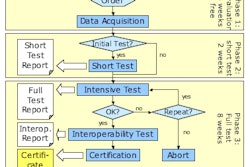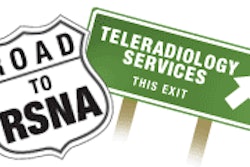
It doesn't have the drama of Y2K or HIPAA, but this year's switch to daylight-saving time (DST) three weeks early has drawn the attention of healthcare facilities and their IT vendors to ensure the change goes like ... well, clockwork.
In August 2005, President Bush signed into law the Energy Policy Act of 2005, which included daylight-saving time going into effect this year on Sunday, March 11, three weeks earlier than the traditional first Sunday in April. The U.S. -- with a few exceptions -- will turn clocks back to standard time on Sunday, November 4, one week later than usual.
(For the record, daylight-saving time is not observed in Arizona, Hawaii, American Samoa, Guam, Puerto Rico, and the Virgin Islands.)
While no major problems in patient care are expected, the U.S. Food and Drug Administration (FDA) on March 1 warned of the possibility that some medical devices, hospital networks and IT systems may "generate adverse events because of the upcoming change in the start and end dates for daylight-saving time," and recommended that healthcare facilities take preventive measures.
The FDA added that if a medical device or network does not correctly adapt to the time change, it potentially could result in a patient receiving incorrect medication at the wrong time, a treatment may be missed or given more than once, or important patient information could be incorrectly recorded.
Patches and upgrades
Over the past several months, IT vendors have brainstormed on "what if" worst-case scenarios, while hospitals, clinics, and imaging centers have conducted due diligence on their IT equipment. The solutions include software patches and upgrades to remedy the DST issue well in advance.
"The reality is, this is not new; we change clocks all the time," said Jim DeLone, a director in customers service center for Malvern, PA-based Siemens Medical Solutions.
"We don't see any major impacts based on our analysis, but we are trying to prepare ourselves in every possible for any kind of potential patient safety situation."
Even though Arizona does not participate in the DST switch, the time change is still an issue for the 41 radiologists at Scottsdale Medical Imaging (SMI), which handles 250,000 images annually from 11 sites. "I wouldn't call it a panic, but it is fairly urgent and frantic," said Dr. James Whitfill, SMI's chief information officer.
 |
|
"We don't think it will affect patient care. Patient care is the highest issue we are concerned about." — James Whitfill, CIO at Scottsdale Medical Imaging |
Whitfill said he started to hear the buzz about the early DST change in late 2006. It came with word that Microsoft was not supporting DST patches for Windows 2000 platforms through standard service. "That is a fairly big deal to a lot of radiology departments, because clinical systems that go through FDA approval often are running on older platforms," he added.
Whitfill said a number of colleagues opted for software patches from other vendors to make sure systems switch to DST on time.
SMI analyzed its IT systems, even though its clocks will not change, to ensure that it remains in sync with facilities. "Daylight-saving time has always been a vexing issue for any kind of coordination with our partners across the country," Whitfill added. "Schedules change, time zones change. It is further complicated by colleagues who have information systems in multiple time zones."
SMI's PACS and RIS are from Chalfont St. Giles, U.K.-based GE Healthcare, which has issued a mandatory software update to deal with both operating systems and internal applications.
"In a PACS environment, dates and times -- depending on the version of the PACS -- can be calculated either from the server or from the workstation," Whitfill said. "You might get your DST patches and installation is correct on the server, only to be thwarted by a workstation that was missed."
Interfaced IT systems
Much attention has been given to IT systems that interface with other technologies "to make sure every node, every system, and every workstation feeding off a network is in sync and we have no synchronization challenges based on time," said Michael Swinford, GE's general manager of services. "The risk assessment is that there are no issues, but we want to make sure everything is take care of ahead of time, so on March 11, all of our customers are up and running."
GE is using a common Web portal for all its customers, including multivendor service clients with non-GE technology. The company already has remotely performed software patches for thousands of systems without customer intervention. Customers can determine on the portal if their DST issue has been fixed remotely or they can access directions on how to fix it themselves. The upgrades also account for the return to standard time in November.
"In some scenarios, it is as simple as right-clicking the bottom of the Microsoft software and changing the time," Swinford said. "In other scenarios, it is more complex and (users) need a password to get into the operating system. We have information on where to find the password in the operating manuals."
The severity of the time change issue, Swinford said, varies by product type. "We had some initial concerns with different products where patients are injected with radioisotopes. With the physician who is reading the image, there was some concern about the time stamp. Are they looking at a radioisotope that is an hour older in the body versus just injected?" he added. "At the end of the day, I am happy with all the risk assessments and it is minimal across the board."
Early preparation
The Medical University of South Carolina (MUSC) in Charleston started preparations in January in anticipation of the early DST time change. "It was more a matter of hounding the vendors back then to get the patches out," said George Spain, MUSC's technical publisher, who is helping to coordinate the facility's efforts. "We had a couple of vendors here -- and I don't want to say -- who sort of ignored the problem."
Over time, the patches and upgrades arrived and were installed, and MUSC figures to be in sync when DST arrives. One of its concerns is ensuring that calendaring programs are accurate to coordinate operating room times, but beyond that, the facility does not anticipate any major problems.
"This isn't like Y2K. You don't have to go into the trenches; you can go server by server," Spain said. "In some cases, the patches are a simple code. In other cases, it is resetting the network time protocol."
'A big fire drill'
Like many vendors, Siemens has been analyzing and reviewing internal applications for several months across its product lines. Operating system (OS) software patches are the most critical components to ensure a smooth time change.
Siemens already has performed the upgrades and installed the patches for its application service provider (ASP) customers. The ASP environment includes servers, workstations, mainframes, and some legacy products. "All of our ASP environments were handled remotely, so we were able to patch all of the applications," DeLone said. "I think the majority of our customers are prepared for this event, especially the ASP customers."
Siemens also has what it calls in-house computing customers who handle their own IT internally. Marie Pettinos, Siemens' senior director for customer relationship management, said the company created a Web site that linked those customers to time-change patches and upgrades from Siemens and its vendor partners.
Cathy Donohue, PACS product manager for Boston-based Amicas, likened the DST issue to "a big fire drill."
Amicas' technology is based on Windows applications, relying on Microsoft for the operating system. "Across the board," Donohue said, "our recommendation to our installed base is to abide by Microsoft proposed patches and configurations to adjust to the new daylight-saving time."
Making sure all workstations are in sync with DST also is imperative. An issue may arise relative to the worklist a radiologist reads if the time stamp does not reflect the actual time of a patient report and the radiologist inadvertently misses a study. "If I am in a trauma area, I must make sure my worklist is accurate, which studies came in, and which time they came in to rate them appropriately," Donohue added.
Isam Habboush, director of product management in Philips Medical Systems' Healthcare Informatics unit, sees the same potentially adverse scenario in emergency rooms, where an hour's difference can be critical, especially in the case of proper treatment for a heart attack and getting a patient to a cath lab promptly.
For the past several months, Philips' PACS division has been working on solutions that would avoid downtime and interruptions in PACS service. The Andover, MA-based company first evaluated Microsoft's patch that would reset the registry in the Microsoft Windows OS to adjust to DST. Philips found that it could install the patch remotely in its customers' PACS and not cause any PACS downtime.
Philips completed the DST upgrade two weeks ago, which includes adjusting for the return to standard time in November. Healthcare facilities have the responsibility to service modalities and other IT systems that are outside of Philips' control, but do connect to Philips' PACS.
Never too late
Even though only a few days are left before DST goes into effect, it is not too late for healthcare facilities to perform its due diligence. "Don't presume that a system will take care of itself," advised Siemens' Pettinos. "Don't presume that someone else is watching out for your system."
Siemens' DeLone expects a busy Sunday and some additional fallout next week from customers who may not have installed patches or installed them incorrectly.
Amicas' Donohue also expects a busy start to the week. "We will inevitably get into the situation where time will be off, folks will not necessarily know how to fix it, so I think we will play a lot of detective," she added.
If there is a worst-case scenario, it will likely only be that some facilities struggle for the next three weeks until their IT systems make the traditional switch to DST on April 1.
By Wayne Forrest
AuntMinnie.com staff writer
March 8, 2007
Copyright © 2007 AuntMinnie.com



















